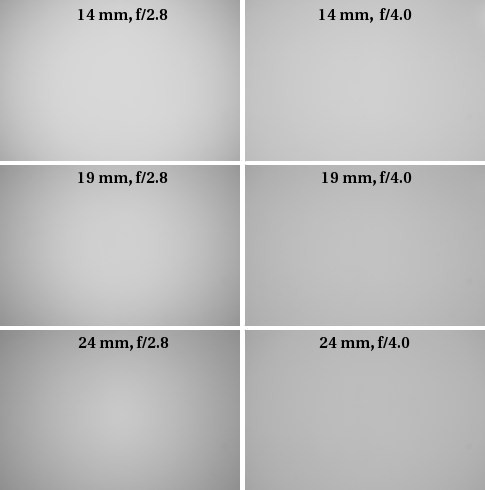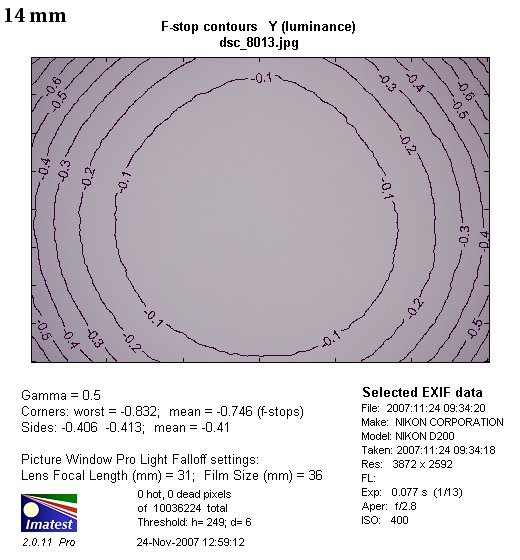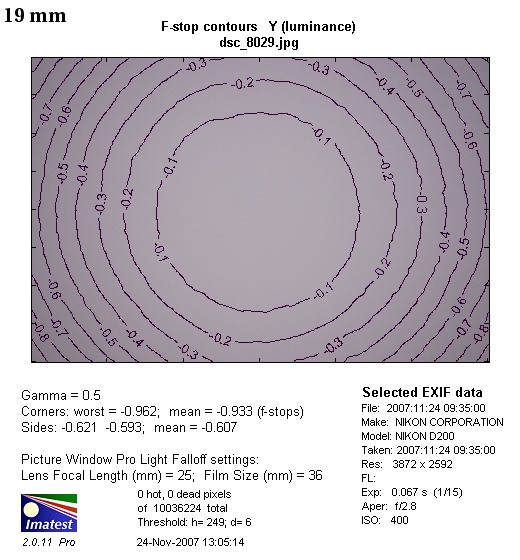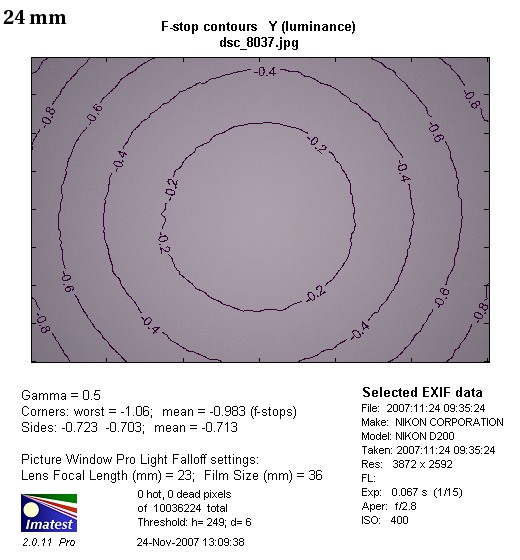Nikon Nikkor AF-S 14-24 mm f/2.8G ED
8. Vignetting

At 19 mm focal length and by f/2.8 the vignetting is 28% (-0.93 EV) and on stopping down to f/4.0 it decreases to 13%. By applying f/5.6 relative aperture the vignetting falls to the level of 9% which is imperceptible.
Please Support UsIf you enjoy our reviews and articles, and you want us to continue our work please, support our website by donating through PayPal. The funds are going to be used for paying our editorial team, renting servers, and equipping our testing studio; only that way we will be able to continue providing you interesting content for free. |
- - - - - - - - - - - - - - - - - - - - - - - - - - - - - - - - - - - - - - - - - - - - - - - -
A very similar situation can be observed at 24 mm focal length. At the maximum relative aperture the light fall-off in the frame corners amounts to 29% (-0.98 EV) and by f/4.0 it decreases to 12%. By f/5.6 the vignetting is practically unnoticeable (9%).
On the one hand we can feel a bit unsatisfied because a lens designed for full frame should perform better on a small DX sensor. On the other hand, though, the competitors didn’t fare distinctly better here either.
 |
 |
 |






